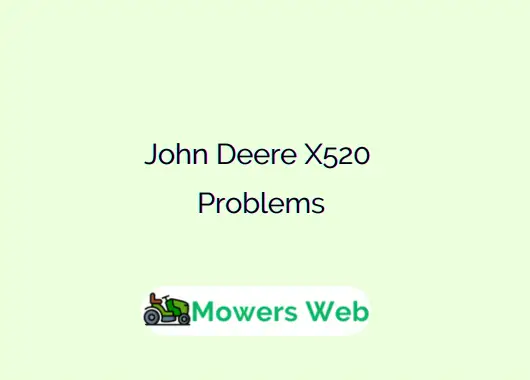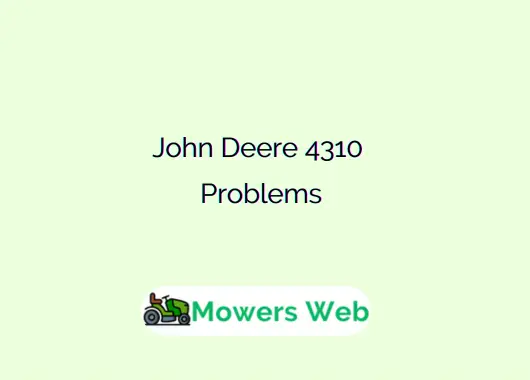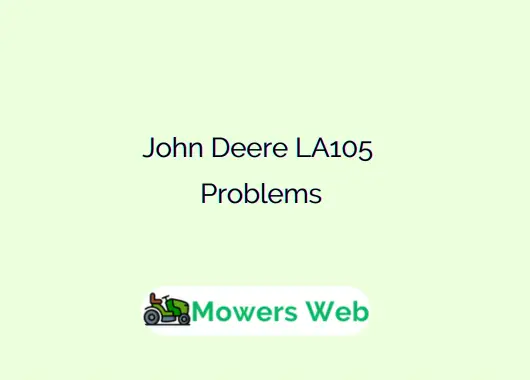Modern John Deere tractors are designed with diesel engines that use a Diesel Particulate Filter (DPF) to control emissions. To keep the filter from clogging, the system performs a process known as regeneration (regen), which burns off trapped soot.
When this system malfunctions, operators face performance loss, warning lights, and reduced productivity.
Below, we break down the most common John Deere regen problems and give clear solutions for each issue.
John Deere Regen Problems
1. Frequent Regeneration Cycles
Some John Deere tractors regenerate too often—sometimes every few hours or even during light-duty tasks. This usually means the system isn’t burning soot completely or that the sensors are giving false readings.
Solution
- Run at higher load: Operate the tractor under a heavier workload or sustained RPMs to help complete passive regeneration.
- Check sensors: Faulty pressure or temperature sensors often trigger unnecessary regens; replace or clean them.
- Update software: Have your ECU software updated to ensure proper regen timing and logic.
- Perform a full parked regen: Let the system complete a full cycle without interruption to clear out soot levels.
2. Failed or Incomplete Regeneration
Sometimes the regen cycle starts but never finishes. The process may abort, or the DPF warning light may remain on after regen. This is often due to low exhaust temperature, clogged injectors, or electrical issues.
Solution
- Clean the hydrocarbon injector: Remove carbon buildup from the injector nozzle so it can deliver fuel properly during regen.
- Inspect exhaust temperature sensors: Faulty readings prevent the system from reaching the required burn temperature.
- Ensure correct conditions: The engine must reach operating temperature, and the machine must be stationary for parked regen.
- Use forced regen if necessary: Use diagnostic tools or the tractor’s control system to manually complete the process.
Related John Deere Tractor Dashboard Symbols(ALL + Meanings)
3. Faulty Sensors
The regen system depends on accurate readings from exhaust temperature sensors, NOx sensors, and differential pressure sensors. A faulty or dirty sensor can stop regen or trigger constant warnings.
Solution
- Inspect wiring and connectors: Damaged or loose connections can cause intermittent faults.
- Clean sensor ports: Remove soot or debris that may block accurate readings.
- Replace faulty sensors: Always use OEM sensors to ensure compatibility.
- Reset the ECU: After sensor replacement, clear codes so the system recalibrates.
4. Clogged Hydrocarbon (HC) Injector
The HC injector (also called the seventh injector) sprays fuel into the exhaust stream during active regen. Over time, soot and carbon block the injector, making regen ineffective.
Solution
- Clean the injector nozzle: Use a proper solvent to remove carbon buildup.
- Replace if damaged: A severely clogged injector may need replacement.
- Use clean diesel fuel: Low-quality or contaminated fuel accelerates buildup.
- Perform full operating cycles regularly: Periodically running at high temperatures helps keep the injector clean.
Related John Deere Power Reverser Transmission Problems(Fixed)
5. Ash Build-Up in the DPF
While soot burns off during regen, ash from oil additives and impurities remains inside the filter. Over time, this ash restricts exhaust flow and reduces regen efficiency.
Solution
- Schedule regular DPF cleaning: Have it professionally cleaned according to John Deere’s service intervals.
- Use low-ash oil: Helps reduce ash formation inside the DPF.
- Monitor exhaust backpressure: Rising pressure indicates a restricted filter.
- Avoid prolonged delays in maintenance: Ignoring ash buildup can permanently damage the DPF.
6. Low Operating Temperatures
Tractors that run mostly at idle or light load don’t reach the exhaust temperatures required for passive regeneration. This causes frequent forced regens and premature soot buildup.
Solution
- Reduce idling: Turn off the engine instead of idling for long periods.
- Operate under full load periodically: Run the tractor hard for 30–60 minutes to allow full soot burn-off.
- Inspect thermostat operation: A stuck-open thermostat can prevent the engine from warming up fully.
- Follow regen prompts: Never ignore or postpone active regeneration alerts.
Related John Deere Fault Code List(Error Code A to Z)
7. Software or ECU Calibration Problems
If regen issues persist after cleaning and part replacements, the problem could be with the software or engine control module (ECU). Faulty calibration can cause incorrect regen timing or data misinterpretation.
Solution
- Update ECU software: Contact a John Deere technician to install the latest software version.
- Clear fault codes: Remove outdated codes that may trigger false warnings.
- Recalibrate after cleaning or DPF replacement: Ensures accurate soot load calculations.
- Check for service bulletins: Some models have known software patches for regen issues.
Preventive Maintenance Tips
To minimize future regen problems:
- Use clean diesel fuel and low-ash oil to reduce soot.
- Operate under proper load occasionally to encourage passive regen.
- Never interrupt regen cycles once they begin.
- Replace sensors and clean injectors at regular service intervals.
- Keep your software up to date to maintain optimal performance.
Related John Deere ZTrak Mower E1 Error(4 Causes + Solutions)
FAQs
How to manually regen a John Deere tractor?
To manually start regeneration, park the tractor on a flat, open area. Keep the engine at operating temperature, place the transmission in neutral, engage the parking brake, and press the DPF regeneration button. The process usually takes 20 to 40 minutes to complete.
What causes frequent regens?
Frequent regens are usually caused by low exhaust temperature, clogged sensors, poor-quality fuel, or excessive idling. Operating under a light load prevents soot from burning naturally, forcing the system to regenerate more often.
Why is my regen not working?
A regen may fail due to faulty sensors, low exhaust temperature, or a clogged hydrocarbon injector. Electrical issues, wiring faults, or outdated software can also interrupt the process.
Related John Deere Power Reverser Transmission Problems(Fixed)
How to stop diesel regen?
Avoiding regeneration isn’t recommended, but you can reduce regen frequency by maintaining higher engine loads, minimizing idle time, and ensuring sensors and injectors are clean. Never manually stop a regen in progress, it can damage the DPF.
How do I manually start DPF regeneration?
Ensure all regen conditions are met, engine warmed up, parking brake on, and PTO disengaged, then press and hold the regen button until the indicator light turns on. Allow the process to finish completely before shutting down.
How to reset a John Deere tractor?
To reset the tractor after service or part replacement, turn off the ignition, wait a few seconds, then restart. For fault code or ECU resets, use a diagnostic tool or have a technician clear the codes through the control module.




